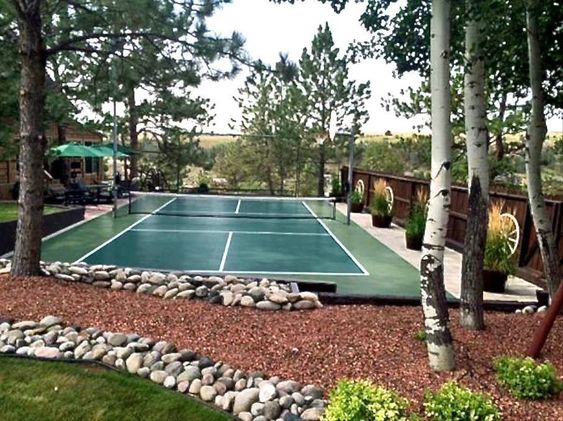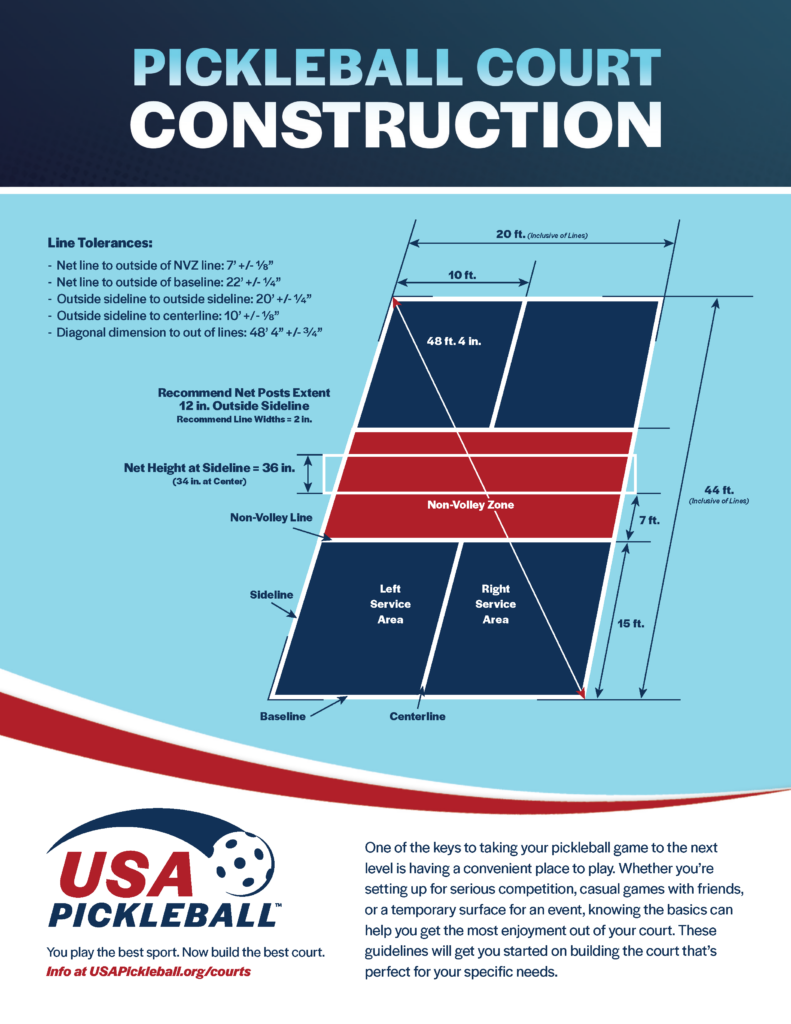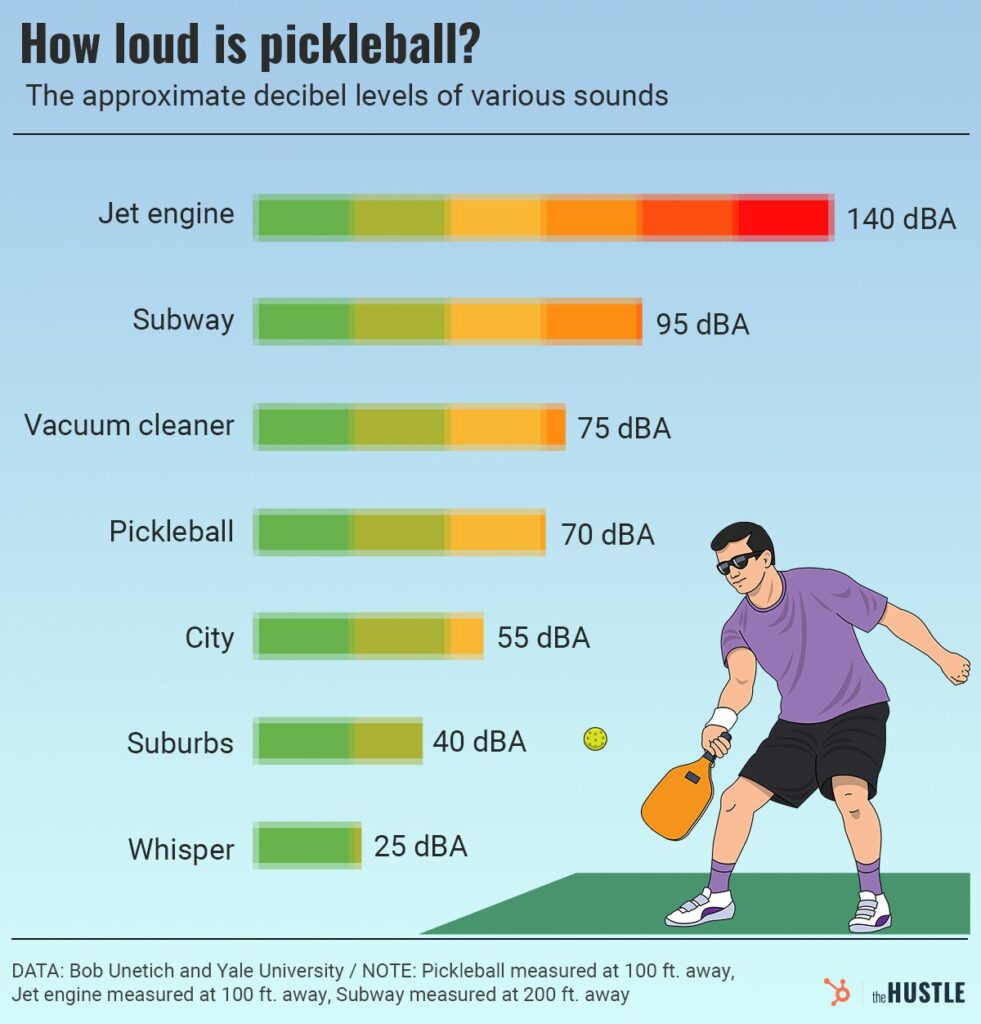
Possibly, you’ve heard of Pickleball. It’s a paddle sport combining badminton, table tennis, and tennis elements. It’s played on a badminton-sized court with a slightly modified tennis net. The paddles are smaller than tennis racquets, and the ball is made of plastic with holes.
Pickleball is a relatively new sport but has seen explosive growth in recent years. In 2022, the number of pickleball players in the United States was estimated to be 8.9 million, up from 2.8 million in 2018. This makes Pickleball the fastest-growing sport in the United States.
There are several reasons for the sport’s popularity:
- It is a relatively easy sport to learn and play. The rules are simple, and the equipment is inexpensive.
- Pickleball is a low-impact sport, which makes it a good option for people of all ages and fitness levels.
- It’s a very social sport. It is often played in doubles, which encourages players to interact with each other.
This explosive growth has led to a shortage of public pickleball courts, and many local municipalities need help to keep up with the demand for new ones. In some cases, cities convert basketball and tennis courts into pickleball courts. In other cases, cities must acquire land and build new courts from scratch.
If there is a shortage of public pickleball courts, people who want to play will have to find other places. They may build a court if they have the space in their backyard.
As a building designer, if you haven’t already been asked to include a private court as a part of the design of a custom home, you may soon be.
Your Pickleball-playing clients will want the convenience, so they can play whenever they want without worrying about scheduling time at a public court.
Homeowners with a knack for entertaining will want to invite their friends and family to play, making private courts the new status symbol in home design.
Building a private pickleball court gives people a sense of ownership and pride. If you haven’t been already, you will be asked to design the court to their specifications and make it their personal space.
Building a private pickleball court is an investment. Players will not likely get bored with the sport any time soon. Pickleball is here to stay for a while, and a private court may increase their home’s value.
In this blog post, you will learn how to size and position a court on the site, what kind of surfacing materials to specify, how to protect the balls and noise from annoying the neighbors, and what kind of amenities make the project an outdoor living award winner.
- What must you know to advise your clients and design a picture-perfect Pickleball court?
- Private Pickleball Court Size
- Private Pickleball Court Surfacing Materials
- Private Pickleball Court Orientation Tips
- Private Pickleball Court Sound Mitigation
- Private Pickleball Court Lighting
- Private Pickleball Court Netting Design
- Private Pickleball Court Amenities
- Private Pickleball Court Construction Manual and CAD Drawings
What must you know to advise your clients and design a picture-perfect Pickleball court?
Private Pickleball Court Size
Many things. But first, the size. Does the site have room for this feature?
An official Pickleball court is 20 feet by 44 feet, but an area of 30 x 60 is suggested. This will provide enough space for players to move around and for balls to bounce.

Private Pickleball Court Surfacing Materials
The more practical surface will be 3 1/2″ of 2500 psi concrete. However, an inch of asphalt over shellrock or crushed concrete can also be used. No costly post-tension slab should needed. One-third of the total cost of the private court will be prepping, framing, and pouring the pad. At the time of writing, the average price of 22 yards of concrete is $3000. Advise your clients to budget $9k to $10k for this project phase.
Various surfacing materials are available, each with its advantages and disadvantages.
Acrylic is the most popular choice because it is durable, easy to maintain, and provides a consistent bounce for the ball.
PickleMaster RTU is a specialized DIY coating system designed for use on pickleball court surfaces and the official court surface of USA Pickleball. The coating is factory-mixed with a fine, rounded aggregate blend to provide a non-slip texture without excessive wear on the balls.
Polyurethane is another popular choice because it is durable and easy to maintain. It is also more slip-resistant than acrylic, which can benefit players.
Epoxy is a less common choice but a good option for courts exposed to a lot of sunlight. It is also more resistant to fading than acrylic or polyurethane.
For concrete surfaces, specify an acrylic adhesion promoter as a primer. For asphalt, an acrylic resurfacer with sand to fill the extra porosity of asphalt.
For those with physical limitations or the means to enjoy the finer things, PickleGrip is a cushioned surfacing material that provides an accurate bounce, a self-draining design and is easy to install. And it comes in various colors.
Private Pickleball Court Orientation Tips
If possible, avoid an east/west orientation of the court. Players should alternate sides to account for wind and sun, but looking directly into the morning or evening sun does not make for a fun playing experience.
Unlike tennis courts, a fence is only necessary if the Pickleball court is adjacent to a property line—tennis balls across a lawn. A Pickleball is lighter and will remain near where it lands if it lands on grass. Some soft and functional landscaping around a court will sufficiently contain misguided shots.

Private Pickleball Court Sound Mitigation
Pwock is a beautiful sound to a Pickleball player. However, sound can be an issue on tightly configured suburban homesites. There can be some hooping, hollering, laughing, trash-talking, and cheering in the heat of battle. Your client’s neighbors may not be amused.
The approximate decibel level of a Pickleball game falls just below a vacuum cleaner and a subway. It is only a little more than a backyard swimming pool but for more extended periods.
Hedges can reduce noise by an average of 2.7 decibels (dB) with a maximum of 7.0 dB. The ideal noise barrier hedge is dense and tall enough that you can’t easily see through or over it.

Private Pickleball Court Lighting
Lights will be necessary for evening play, but less extensively than a tennis court. A two-fixture LED lighting design should be adequate for a single court.
Position the light fixtures on poles at the side of the court facing away from the property line and point the light downward so it does not shine into your neighbors’ yards or windows.
LED Lighting Supply offers a free Pickleball lighting plan that includes the fixture placement, recommendations, and a material quote. It also consists of the foot-candle and light balance calculations. These might be requested if the project is within an HOA.
If your clients want to play Pickleball at night, budget another $4k to $5k for fixtures and installation.
Private Pickleball Court Netting Design
According to USA Pickleball, the net can be made from any mesh material that will not allow a ball to pass through. It should be at least 21 feet 9 inches long, stretching from post to post. The posts should be 22 feet apart and no more than 3 inches in diameter.
Once the net is suspended from the posts across the center of the court, it should be 36 inches tall on the sidelines and 34 inches tall in the center. The top edge of the net should have a cord or cable and be covered with a 2-inch tape.
Several netting options range from temporary portable net kits from around $500 to top-end permanent installations that cost $2500.

Private Pickleball Court Amenities
The most significant variable involved in the cost of a private Pickleball court will be the surrounding amenities. The landscaping can be as simple as a ground cover edging to a hugely extensive backdrop.
Your clients may entertain the idea of seating areas with benches, fountains, gazebos, pergolas, or pavilions. This is an area where building designers can excel and create award-winning outdoor living spaces.
Private Pickleball Court Construction Manual and CAD Drawings
Based on our research, the basic Pickleball court can be constructed for about $25,000. Provided there isn’t an extensive amount of earthwork needed.
USA Pickleball offers excellent information about designing and constructing a pickleball court. The organization also offers a detailed USAPA Court Construction Manual for purchase for $34.95.
Although the specifications may be heavily weighted towards advising municipalities on building public courts, there is information for more elaborate court projects and care and maintenance instructions. When you pass on that helpful information, your clients will adore you even more.
To speed up the process for the designer, the AIBD provides a CAD file that includes a plan view, elevations, and cut section of a basic Pickleball court made of concrete without any surfacing materials. With these drawings, you can focus your time on the amenities and making the surrounding area beautiful. To download this helpful tool, visit AIBD.org/pickleball-cad.
